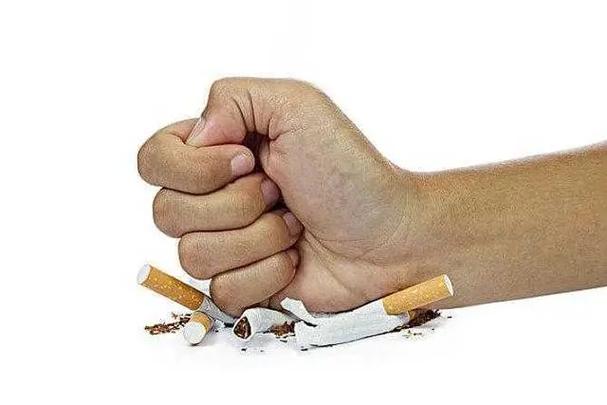Title: The Invisible Threat: How Secondhand Smoke Endangers Daycare Center Workers
Introduction
Daycare centers are meant to be safe havens for children, environments dedicated to nurturing, learning, and growth. The dedicated professionals who work there—teachers, caregivers, and support staff—undertake the critical responsibility of safeguarding our youngest and most vulnerable. However, an insidious and often overlooked occupational hazard threatens their health: secondhand smoke (SHS). While smoking bans inside facilities are universal, the lingering danger transported from children’s homes poses a significant and preventable health risk to daycare workers. This article explores the mechanisms of exposure, the specific health implications for staff, the existing regulatory gaps, and the urgent need for comprehensive protective measures.
Understanding the Vector: Thirdhand Smoke and Its Transport
To comprehend the risk, one must move beyond the concept of secondhand smoke—the smoke exhaled by a smoker or emitted from a burning cigarette—and understand the potency of thirdhand smoke (THS). THS refers to the toxic residue that clings to surfaces like hair, skin, clothing, toys, and car seats long after a cigarette has been extinguished. These residues contain thousands of chemicals, including known human carcinogens like nicotine, formaldehyde, and polycyclic aromatic hydrocarbons.
Children living in smoking environments become unwitting carriers of these toxic particles. Their hair, clothes, and the backpacks they bring to daycare are all contaminated. When a daycare worker holds a child, helps them with their coat, or cuddles them for a story, they are inhaling these resuspended toxic particles. The enclosed, often carpeted, and poorly ventilated spaces common in many daycare settings further concentrate these pollutants, creating a persistent low-level exposure environment for the staff throughout their entire workday.
The Health Consequences: A Cascade of Risks
The constant, cumulative exposure to SHS and THS has profound implications for the respiratory and cardiovascular health of daycare workers.
-
Respiratory Illnesses: Daycare workers are already at a higher risk for common respiratory infections due to their close contact with children. SHS exposure exacerbates this risk significantly. It irritates the airways, leading to:
- Chronic Respiratory Symptoms: Persistent coughing, phlegm, wheezing, and breathlessness.
- Increased Susceptibility to Infections: Compromised lung function makes workers more prone to severe cases of bronchitis, pneumonia, and of course, the common cold and flu.
- Asthma Development and Exacerbation: For workers with asthma, SHS is a powerful trigger for attacks. For those without, long-term exposure can contribute to its development.
-
Cardiovascular Damage: The Institute of Medicine has conclusively linked secondhand smoke exposure to heart disease. Even short-term exposure can have immediate adverse effects on the cardiovascular system, including:

- Increased heart rate.
- Reduced coronary blood flow.
- Damage to the lining of blood vessels, making blood more prone to clotting.
- For workers with underlying, perhaps undiagnosed, heart conditions, this daily exposure can elevate their risk of a heart attack or stroke.
-
Long-Term Cancer Risk: This is the most grave concern. The U.S. Surgeon General has stated there is no risk-free level of exposure to secondhand smoke. The carcinogens in SHS and THS, such as benzene and nitrosamines, are known to cause cancer. Prolonged occupational exposure increases a daycare worker’s risk of developing:
- Lung Cancer
- Breast Cancer
- Nasal Sinus Cavity Cancer
- Throat Cancer
The Regulatory Void and Institutional Challenges
Despite the clear evidence of harm, a significant regulatory void exists. Laws effectively prohibit smoking inside daycare facilities, but they are silent on the issue of contamination brought in from the outside. This places the burden squarely on daycare centers themselves to create and enforce protective policies, which often leads to inaction due to several challenges:
- Sensitivity and Stigma: Addressing a parent’s smoking habits is an incredibly delicate issue. Directors and staff fear offending parents, damaging relationships, or even losing enrollment.
- Lack of Awareness: Many parents are genuinely unaware of the concept of thirdhand smoke and that their child’s clothing can transport dangerous toxins. Similarly, some daycare administrators may not fully grasp the occupational health risk their employees face.
- Implementation Hurdles: Enforcing a "smoke-free caregiver" policy can seem logistically difficult. Questions arise about how to communicate the policy, how to handle non-compliance, and whether it is legally enforceable.
A Call to Action: Strategies for a Smoke-Free Environment
Protecting the health of daycare workers requires a multi-faceted approach involving awareness, policy, and compassion.
- Center-Wide Smoke-Free Policies: Daycare centers must adopt and prominently communicate comprehensive "smoke-free" policies that extend beyond their physical walls. These policies should kindly and clearly request that parents and caregivers ensure children arrive in smoke-free clothing and that anyone handling the child refrains from smoking immediately before drop-off.
- Education and Communication: Centers should host informational sessions or provide pamphlets explaining the science of thirdhand smoke in non-judgmental language. Framing it as a shared goal—protecting the health of all children and the staff who care for them—can foster cooperation rather than defensiveness.
- Practical Mitigation Measures:
- Ventilation and Cleaning: Invest in high-quality air purifiers with HEPA filters. Ensure frequent vacuuming with HEPA-filter vacuums and regular washing of soft surfaces like rugs and nap mats.
- Outdoor Storage: Provide accessible but separate storage for children's outerwear like coats and backpacks, ideally in ventilated areas away from main classrooms.
- Hand and Face Washing: Implementing a policy of washing children’s hands and faces immediately upon arrival can reduce the transfer of toxins from skin to toys and to staff.
- Occupational Health Recognition: The risks of SHS exposure for daycare workers must be formally recognized by occupational safety and health administrations. This could lead to the development of official guidelines and standards, empowering workers and giving centers a framework to follow.
Conclusion
The dedication of daycare workers is immeasurable, and their right to a safe working environment is non-negotiable. The hazard of secondhand and thirdhand smoke, though invisible, is a real and present danger that has been ignored for too long. It is not a matter of assigning blame but one of embracing responsibility. Through education, thoughtful policy, and a collective commitment to health, we can clear the air. Ensuring that those who devote their lives to caring for our children are not forced to jeopardize their own well-being in the process is an ethical imperative we must all act upon.











